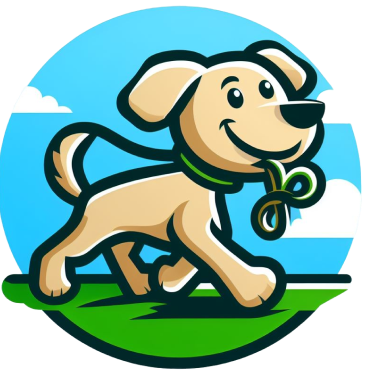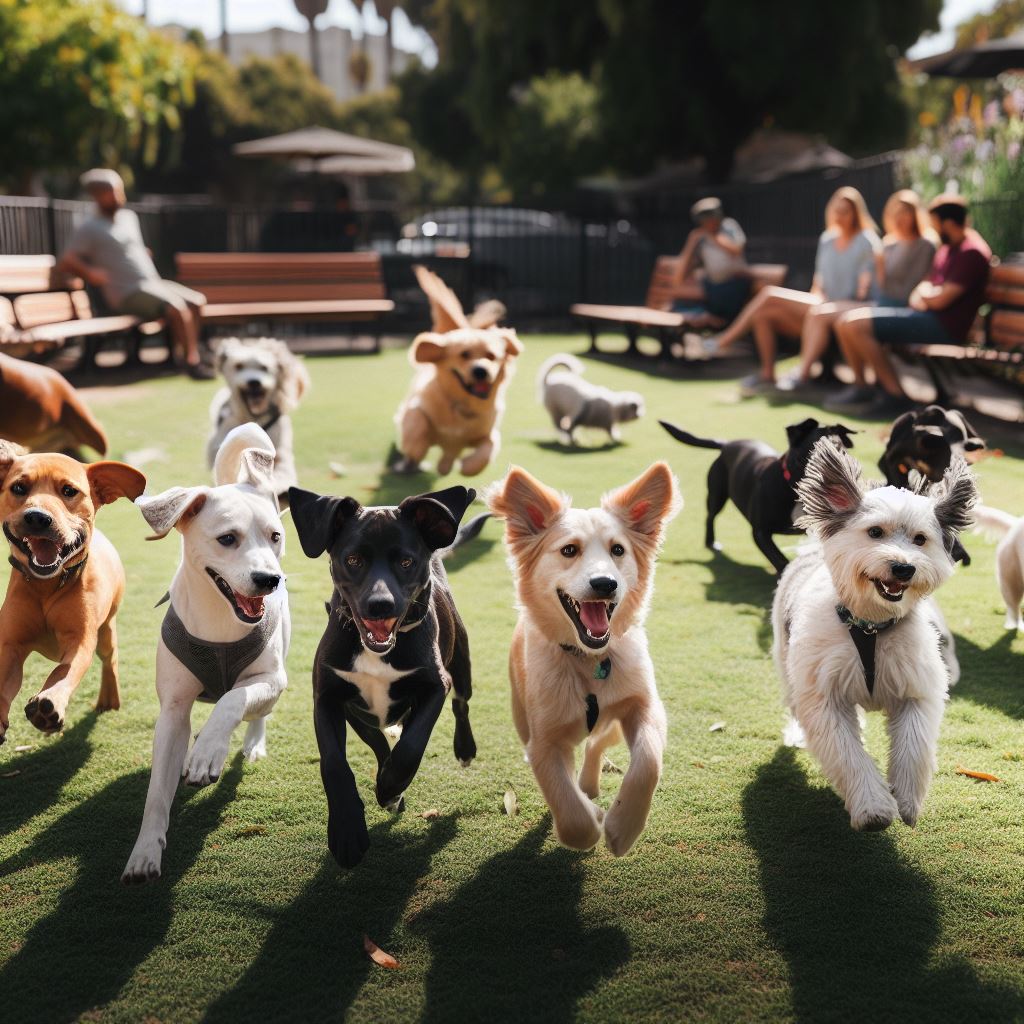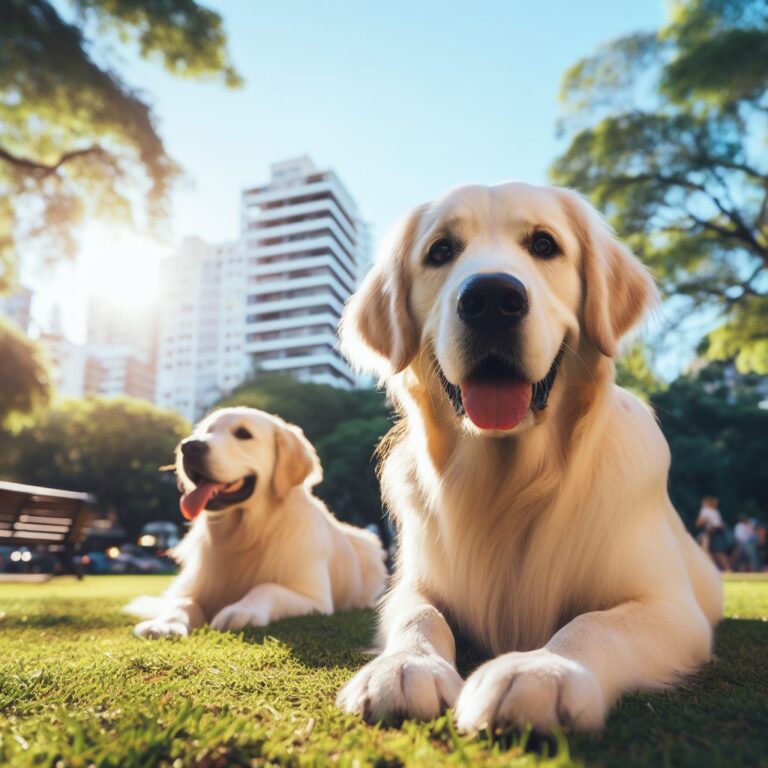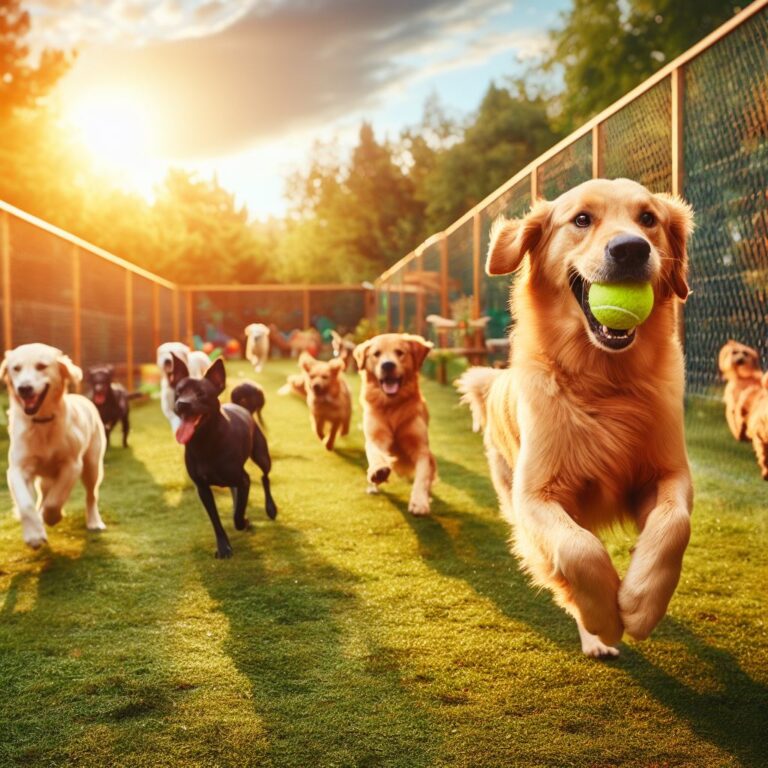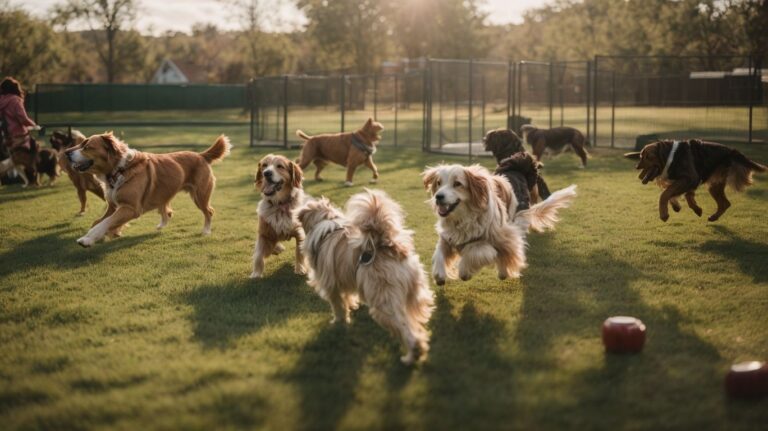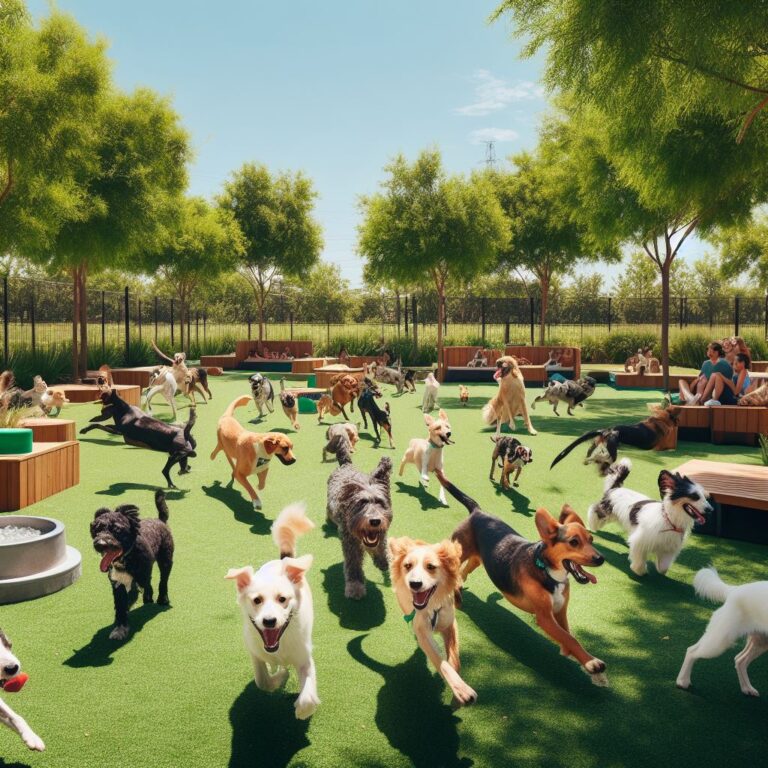Dog Park New York
- Dog Park New York - October 10, 2023
- Revolutionizing Canine Fitness: A Comprehensive Review of the Dog Treadmill for Medium Dogs - October 10, 2023
- Dog Treadmill Review: A Comprehensive Look at the Game-Changer for Large & Medium Sized Dogs - October 9, 2023
The History and Evolution of Dog Parks in New York City
Dog parks have become an integral part of the urban landscape in New York City, catering to the needs of the growing canine community. The rise in popularity of dog parks can be attributed to the increased awareness about the importance of providing dogs with safe and designated spaces for exercise and socialization. Over the years, the concept of dog parks in the city has evolved significantly, adapting to the changing needs and preferences of dog owners and their furry companions.
In the early days, dog parks were scarce in New York City, with limited options available for dog owners to let their pets run free. However, as the demand for such spaces grew, the city recognized the need for designated areas where dogs could safely interact and play. Consequently, the first dog park in New York City was established in Washington Square Park in 1990. This marked the beginning of a new era for dog owners, providing them with a dedicated space to let their four-legged friends off-leash and engage in off-leash play. Since then, the number of dog parks in the city has steadily increased, with new parks being developed in various neighborhoods to cater to the growing dog-loving community.
Exploring the Benefits of Dog Parks for Canine Socialization
Dog parks play a crucial role in promoting socialization among canines. By providing a designated space for dogs to interact with each other, these parks offer countless benefits for their overall well-being. One of the key advantages is the opportunity for dogs to develop and improve their social skills. Interacting with other dogs helps them learn proper behavior, communication, and body language, which are vital for successful socialization. This is especially important for puppies who are still learning how to navigate the world around them. In a dog park setting, they can explore, play, and observe other dogs, allowing them to become more confident and better equipped to interact with a diverse range of canines in their daily lives.
Moreover, dog parks offer a unique environment where dogs can interact with various breeds, sizes, and temperaments. This exposure to different types of dogs helps canines become more adaptable and accepting of other animals. It also provides valuable opportunities for owners to socialize and exchange advice with fellow dog enthusiasts. Dog parks serve as a community hub, allowing both canines and humans to forge connections and foster a sense of belonging. Building these social connections is not only beneficial for the dogs’ mental and emotional well-being but also enhances the overall quality of life for their owners.
Understanding the Design and Layout of Dog Parks in New York
Dog parks in New York City are carefully designed and structured to create a safe and enjoyable environment for both dogs and their owners. The layout of these parks usually consists of two main areas: the smaller, enclosed section for small and shy dogs, and the larger, open area for larger and more energetic dogs. This segregation allows for dogs of different sizes and temperaments to have appropriate spaces to socialize and play.
Additionally, the design of dog parks includes specific features and amenities to cater to the needs of our furry friends. Most dog parks have ample space for dogs to run freely and exercise, with well-maintained grass or artificial turf. These parks are usually fenced off for added security, preventing any potential escapes and ensuring the safety of the dogs within. Furthermore, there are often designated areas with water stations or drinking fountains to keep dogs hydrated, as well as waste stations for convenient disposal of dog waste. All these elements come together to provide a conducive environment for dogs to socialize, exercise, and have a great time in the company of their fellow canines.
Tips for Choosing the Right Dog Park in New York City
When it comes to choosing the right dog park in New York City, there are several factors to consider. Firstly, location is key. Look for a park that is conveniently located near your home or workplace, making it easier for you to visit regularly. This will not only save you time and hassle but also ensure that your furry friend gets to enjoy the park as frequently as possible. Additionally, consider the size of the park. If you have a small dog, look for a park that has a separate designated area for small breeds to ensure their safety and comfort. On the other hand, if you have a large, active dog, opt for a park with ample space and amenities that cater to their energetic needs.
Another important aspect to consider is the park’s facilities and features. Look for a park that provides water fountains or hydration stations for dogs to quench their thirst, especially during hot summer months. Dog waste disposal stations and cleanup bags are also essential to maintain cleanliness and hygiene within the park. Additionally, it’s worth checking if the park offers shaded areas or benches for pet owners to relax and watch over their furry companions. A well-maintained and clean park is always preferable, so don’t forget to take note of the park’s cleanliness and sanitation practices. By considering these factors, you can choose a dog park that suits both you and your beloved pup’s needs.
Safety Measures and Etiquette to Follow at Dog Parks
When visiting dog parks in New York City, it is essential to prioritize safety and follow proper etiquette to ensure a positive experience for all. Firstly, it is crucial to keep a close eye on your dog at all times to prevent any potential conflicts or accidents. Always have them within sight, particularly if they are playing with other dogs or engaging in any high-energy activities. Additionally, make sure your dog is up to date on vaccinations and has been properly socialized before entering a dog park. This is important to minimize the risk of any potential diseases or aggression that could arise from interactions with other dogs.
Furthermore, it is important to respect the space and boundaries of both dogs and their owners at the park. Keep in mind that not all dogs will be friendly or comfortable with interaction, so ask for permission before allowing your dog to approach another. Additionally, be mindful of your dog’s behavior and body language, addressing any signs of stress or discomfort. If your dog is displaying aggressive behavior or is unable to get along with others, it may be best to remove them from the park to avoid any potential conflicts. Overall, by prioritizing safety and respecting the space and comfort of others, dog parks can continue to be enjoyable environments for both dogs and their owners.
Engaging Activities and Amenities Offered at Dog Parks in New York
Engaging activities and amenities are an essential part of dog parks in New York, ensuring that both dogs and their owners have a fun and fulfilling experience. One popular activity offered at many dog parks is agility courses. These courses are designed to challenge dogs both mentally and physically, with obstacles such as ramps, hurdles, and tunnels. They provide an opportunity for dogs to test their skills, improve their coordination, and build confidence. Owners can also participate in these courses, further strengthening the bond between them and their furry companions.
Another amenity commonly found at dog parks in New York is water features. Dogs love to splash and play in water, and these water features provide a refreshing way for them to cool off during hot summer days. Whether it’s a small splash pad or a larger pond, these water features are a favorite among dogs of all sizes. Not only do they provide a source of fun and entertainment, but they also help dogs stay hydrated and active. Additionally, some dog parks offer dog-friendly beaches where dogs can enjoy a swim, providing a unique and enjoyable experience for both dogs and their owners.
Spotlight on Popular Dog Parks in Different Neighborhoods of New York
New York City is home to a multitude of dog parks spread across different neighborhoods, catering to the needs of both canines and their owners. One popular dog park in Manhattan is Hudson River Park Dog Run. Situated along the scenic Hudson River, this dog park provides a spacious area for dogs to roam and play. The synthetic turf surface ensures cleanliness and durability, while the separate enclosures for large and small dogs ensure safe and comfortable interactions. With benches for owners to relax and enjoy the view, Hudson River Park Dog Run offers a peaceful oasis in the bustling city.
Moving to Brooklyn, McCarren Park Dog Run stands out as a favorite among locals. Located within the larger McCarren Park, this dog run features separate sections for large and small dogs, ensuring a harmonious environment for all. The dog run is enclosed by tall fences to prevent escapes and has double-gated entry points for added safety. The rubberized ground surface provides cushioning for dogs, reducing the risk of injuries during play. With ample shade from mature trees and water stations to keep dogs hydrated, McCarren Park Dog Run offers a pleasant and convenient space for dogs and their owners to socialize and exercise.
Dog Park Regulations and Policies Implemented by New York City
Dog parks in New York City are subject to certain regulations and policies implemented by local authorities. These measures aim to ensure the safety and well-being of both dogs and park visitors. One important regulation is the requirement for all dogs to be licensed and vaccinated against common diseases such as rabies. This helps prevent the spread of infections and protects the health of the canine community. Additionally, owners are expected to clean up after their pets, maintaining a clean and sanitary environment for all users of the park. By enforcing these rules, the city fosters responsible pet ownership and promotes a pleasant experience for everyone involved.
Another policy that is strictly enforced in New York City’s dog parks is the rule regarding aggressive or unruly dogs. Dogs that display aggressive behavior, such as biting or excessive barking, may be asked to leave the park. This ensures the safety and comfort of other dogs and their owners. Furthermore, some parks may require all dogs to be spayed or neutered, as this can help reduce instances of aggression and minimize the risk of unwanted litters. These regulations not only contribute to a peaceful and harmonious atmosphere within the park, but also strive to create a safe environment where dogs can socialize and thrive.
How Dog Parks Contribute to a Healthy Lifestyle for Dogs and Owners
Dog parks play a significant role in promoting a healthy lifestyle for both dogs and their owners. Regular visits to dog parks provide ample opportunities for dogs to engage in physical exercise, which is essential for their overall well-being. The open spaces and varied terrains in dog parks allow dogs to run, jump, chase, and play freely, which helps in maintaining their physical fitness and preventing obesity. Additionally, the presence of other dogs stimulates their natural instincts and encourages them to engage in interactive play, enhancing their social skills and mental stimulation.
Moreover, dog parks also contribute to the well-being of owners. Spending time at dog parks creates a sense of community and camaraderie among dog owners, providing opportunities for social interaction and networking. It allows owners to connect with like-minded individuals and build meaningful relationships based on their shared love for dogs. In addition, watching their furry companions have a great time in a safe and controlled environment brings joy and happiness to owners, improving their mental and emotional well-being. Overall, dog parks act as a hub for promoting a healthy lifestyle by fostering physical activity, socialization, and emotional well-being for both dogs and their owners.
Future Developments and Expansion Plans for Dog Parks in New York
In order to meet the growing demand for dog parks in New York, city officials have identified several areas for future developments and expansion plans. These locations have been carefully chosen to ensure accessibility and convenience for dog owners across different neighborhoods. The aim is to create a network of dog parks that cater to the needs of both urban dwellers and suburban residents, providing open spaces where dogs can exercise, socialize, and play freely.
One of the key focuses of these future developments and expansion plans is to provide a variety of amenities and features that enhance the overall dog park experience. This includes the inclusion of agility courses, dog-friendly splash pads, and designated areas for small and large breed dogs. Additionally, efforts are being made to incorporate sustainable and environmentally friendly practices into the design and maintenance of these parks, such as the installation of solar-powered lighting and the use of eco-friendly materials. These future developments and expansion plans aim to create a welcoming and inclusive environment for dogs and their owners, promoting the health and well-being of both.
